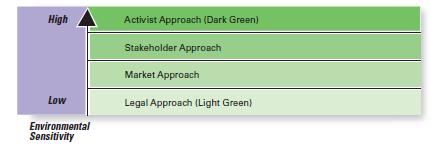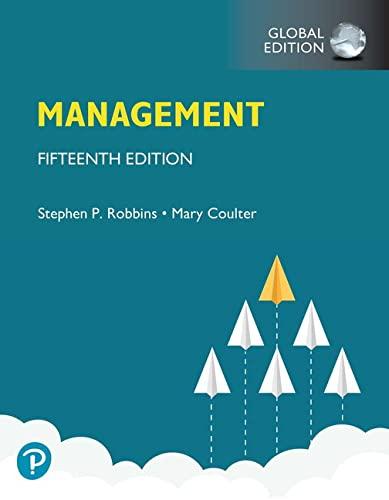One of the biggest fears of a food service company manager has to be the hepatitis A
Question:
One of the biggest fears of a food service company manager has to be the hepatitis A virus, a highly contagious virus transmitted by sharing food, utensils, cigarettes, or drug paraphernalia with an infected person. Food service workers aren’t any more susceptible to the illness than anyone else, but an infected employee can easily spread the virus by handling food, especially cold foods. The virus, which is rarely fatal, can cause flulike illness for several weeks. There is no cure for hepatitis A, but a vaccine can prevent it. Jim Brady, manager of a restaurant, is facing a serious dilemma. He recently learned one of his cooks could have exposed as many as 350 people to hepatitis A during a five-day period when he was at work. The cook was thought to have contracted the virus through an infant living in his apartment complex. Because children usually show no symptoms of the disease, they can easily pass it on to adults. Jim has a decision to make. Should he go public with the information, or should he only report it to the local health department as required by law?
Using what you learned in Part 2, and especially in Chapter 6, what would you do in this situation?
Global Sense A boss who says, “We can try that,” means the proposal has been dismissed in Japan, but the same statement means the idea is fully supported in Germany. Mexican managers who conduct business in the US find American managers to be less relationship-oriented than they are.
In Mexico, doing business with someone means getting to know them personally, while American managers often want to “get down to business” without establishing a relationship first. A vice president for engineering at a major US chip manufacturer, who found one of his projects running more than a month late, felt that perhaps the company’s Indian engineers “didn’t understand the sense of urgency” in getting the project completed. And the manager of a team of employees from around the world didn’t realize how some members had to speak in a style that was not culturally comfortable for them in order to be heard.
It’s not easy being a successful global manager, especially when it comes to dealing with cultural differences.
Those cultural differences have been described as an “iceberg,”
of which we only see the top 15 percent, mainly food, appearance, and language. Although these elements can be complicated, it’s the other 85 percent of the “iceberg” that’s not apparent initially that managers need to be especially concerned about. What does that include? Workplace issues such as communication styles, priorities, role expectations, work tempo, negotiation styles, nonverbal communication, attitudes toward planning, and so forth. Understanding these issues requires developing a global mindset and skill set. Many organizations are relying on cultural awareness training to help them do just that.
Discuss the following questions in light of what you learned in Part 2:
• What global attitude do you think would most encourage, support, and promote cultural awareness?
Explain.
• How might legal, political, and economic differences play a role as companies design appropriate cultural awareness training for employees?
• Is diversity management related to cultural awareness?
Discuss.
• Pick one of the countries mentioned above and do some cultural research on it. What did you find out about the culture of that country? How might this information affect the way a manager in that country plans, organizes, leads, and controls?
• What advice might you give to a manager who has little experience globally?......... 1
Discussion Questions
P2-1. Do you think Howard Schultz and Kevin Johnson have viewed their roles more from the omnipotent or from the symbolic perspective? Explain.
P2-2. What has made Starbucks’s culture what it is? How is that culture maintained?
P2-3. Does Starbucks encourage a customer-responsive culture? An ethical culture? Explain.
P2-4. Describe some of the specific and general environmental components that are likely to impact Starbucks.
P2-5. How would you classify the uncertainty of the environment in which Starbucks operates? Explain.
P2-6. What stakeholders do you think Starbucks might be most concerned with? Why? What issue(s) might each of these stakeholders want Starbucks to address?
P2-7. If Starbucks wanted to increase the adaptability of its organizational culture due to the tough competition it is facing, what are some examples of how Starbucks could encourage more innovation and experimentation among its employees?
P2-8. What types of global economic and legal-political issues might Starbucks face as it does business globally?
P2-9. Pick one of the countries mentioned as an important target for Starbucks. Make a bulleted list of economic, political-legal, and cultural characteristics of this country and how it might affect Starbucks’s operation.
P2-10. What workforce challenges might Starbucks face in China in regard to its partners?
P2-11. With more than 330,000 partners worldwide, what challenges might Starbucks face in making sure its diversity values are practiced and adhered to?
P2-12. Kevin Johnson is quoted on the Starbucks website as saying, “We aspire to be a place of inclusion, diversity, equity and accessibility.” Explain what you think this means. How are these four concepts different from one another?
P2-13. What are specific ways in which Starbucks has shown top-management commitment to diversity?
In what ways could Starbucks become even stronger in the area of diversity?
P2-14. Go to the company’s website, www.starbucks.com, and find the latest corporate social responsibility report. Choose one of the key areas in the report (or your instructor may assign one of these areas).
Describe and evaluate what the company has done in this key area.
P2-15. What do you think of Starbucks’s goal to stop using plastic straws worldwide by 2020? What challenges might it face in meeting that goal? Is this merely a “public relations” promotion?
P2-16. Which of the approaches to “going green” (see Exhibit 6-3) does Starbucks utilize? Explain your choice.
Exhibit 6-3

P2-17. What do you think the company’s use of the term partners instead of employees implies? What’s your reaction to this? Do you think it matters what companies call their employees? (For instance, Walmart calls its employees associates.) Why or why not?
P2-18. Would you classify Starbucks’s environment as more calm waters or white-water rapids? Explain.
How does the company manage change in this type of environment?
P2-19. Using Exhibit 13-8) describe which innovation variables are already a part of Starbucks? To stimulate more innovative, which innovation variables could they consider adding more of ?
Step by Step Answer:






